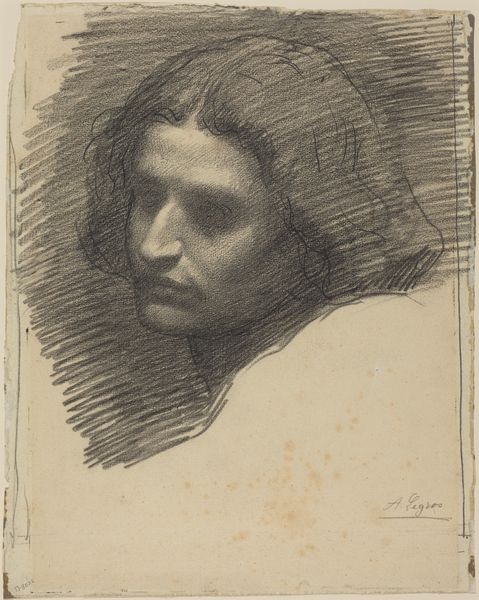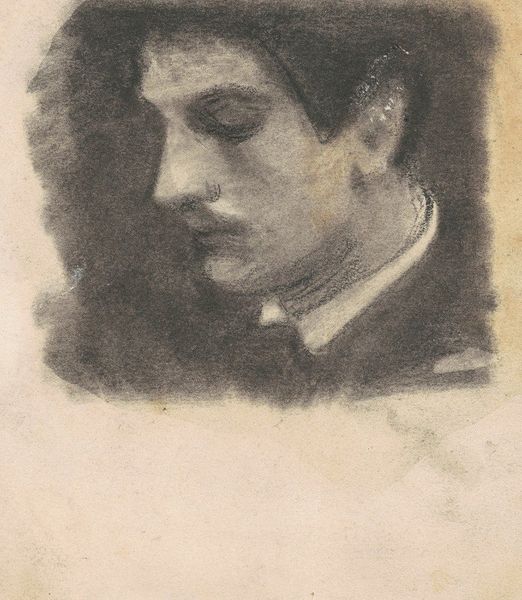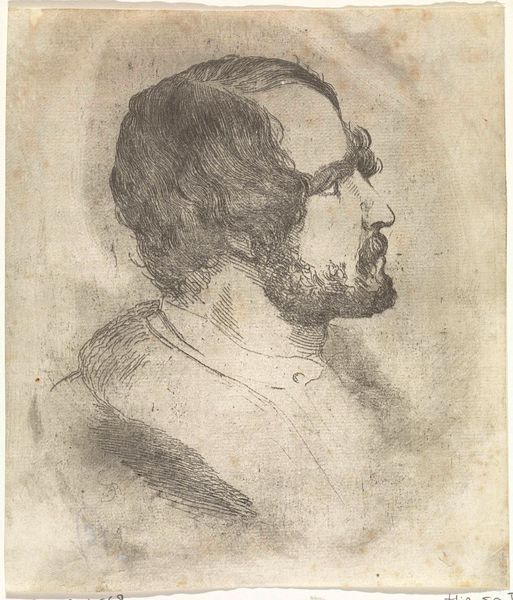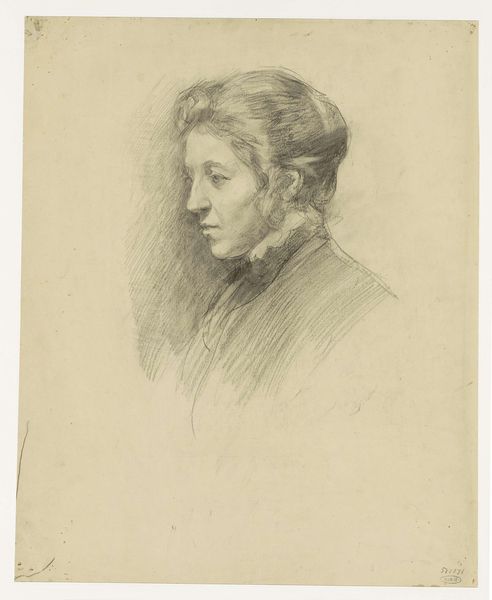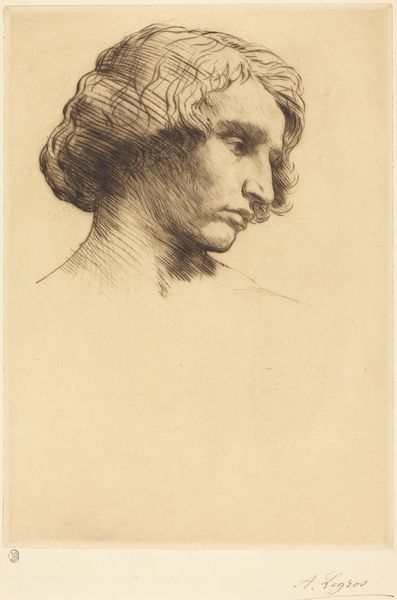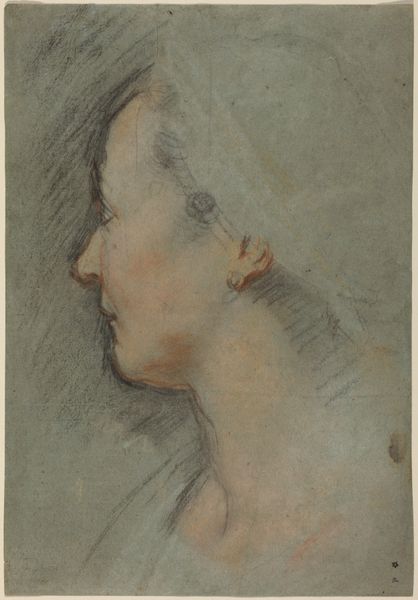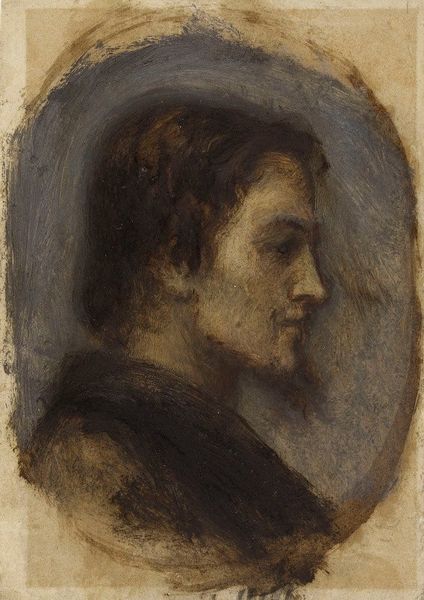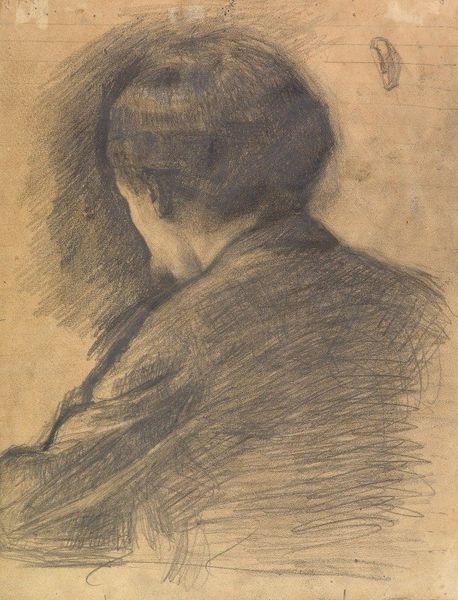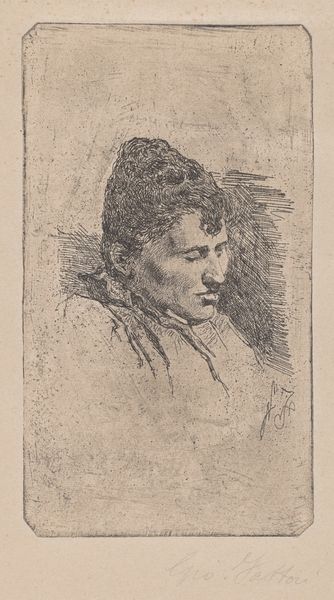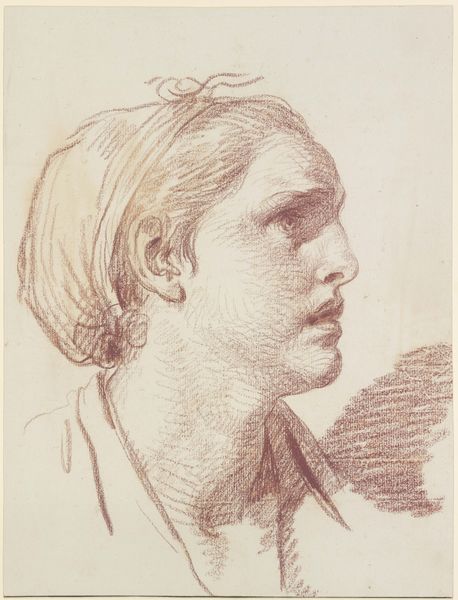
Dimensions: height 358 mm, width 256 mm, height 244 mm, width 196 mm
Copyright: Rijks Museum: Open Domain
Curator: Here we have August Allebé's 1858 portrait of the artist Louis van Erven Dorens, rendered in pencil. What catches your eye about this piece? Editor: The ephemerality of it all. It’s delicate and feels fleeting, almost unfinished, like a thought barely captured on paper. Curator: That delicate touch is indeed part of the Romantic sensibility of the time, wouldn't you agree? It reflects a move toward portraying interiority, using looser lines to suggest rather than rigidly define form. And within a broader historical context, we can see that there were a lot of shifts happening, too, for artists, specifically regarding recognition. Editor: Right. It feels very much of its time. I’m curious about the subject, Louis van Erven Dorens. How was this portrait received, both within the artistic community and beyond? Were these men aware of the evolving role of artists in society, perhaps grappling with issues of autonomy and creative expression that we still wrestle with today? Curator: Undoubtedly. The portrayal hints at this evolving self-awareness among artists. The controlled chaos of pencil strokes, those layered marks... it reflects the individual's striving against societal norms even at that time. Romanticism in this way wasn't just an aesthetic style, but it had sociopolitical meaning too, didn't it? Editor: Absolutely. I’m struck by the use of graphite to craft that intense gaze. There’s something both vulnerable and assertive in how he meets our eye. But at the same time, I am not entirely sure what gaze he's reflecting? There's very little that gives you any clue regarding who that man was or even what social environment did he occupy. I think that there is quite a bit of speculation in how to see that, particularly if you use today's criteria. Curator: The Romantic period was complex. We should also bear in mind the artwork's function and location when trying to reconstruct its contemporary meaning. As a portrait likely circulated amongst a particular artistic and intellectual circle, it wasn't meant to engage with the masses so much. Editor: Very good point. Still, seeing it now in the Rijksmuseum— a space that did not even exist back when this was created — invites different contemporary interpretations. Curator: Yes, now, displayed as part of the museum's permanent collection, the sketch encourages a fresh conversation. Editor: Well said. And for me, it serves as a quiet reminder that art has the power to not just capture a moment, but to ignite an ongoing conversation. Curator: Precisely, it's through this ongoing exchange of ideas that we are able to truly connect with and comprehend the past, but also reflect on our present.
Comments
No comments
Be the first to comment and join the conversation on the ultimate creative platform.

